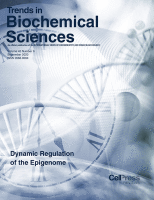 DOI:https://doi.org/10.1016/j.tibs.2020.08.003
DOI:https://doi.org/10.1016/j.tibs.2020.08.003
Highlights
-
Divalent cations are essential agents in life with myriads of molecular functions and lesser known structural roles, acting as glue-like agents.
-
By exploiting the architectonic properties of Zn 2+ and others, novel protein materials are generated, including particles, fibers, matrices, and a diversity of ordered and amorphous clusters.
-
These materials result from the controlled coordination of divalent cations, at physiological concentrations, with histidine-rich proteins.
-
Among them, soluble self-assembling oligomers serve as protein-only nanomedicines or nanocarriers for intravenous administration.
-
Amyloidal protein clusters mimic the function of endocrine secretory granules, releasing protein drugs.
-
Functional protein materials assembled by divalent cations offer unexpected tools in precision medicines through biocompatible scaffolds, drugs, and drug delivery agents.
Among inorganic materials, divalent cations modulate thousands of physiological processes that support life. Their roles in protein assembly and aggregation are less known, although they are progressively being brought to light. We review the structural roles of divalent cations here, as well as the novel protein materials that are under development, in which they are used as glue-like agents. More specifically, we discuss how mechanically stable nanoparticles, fibers, matrices, and hydrogels are generated through their coordination with histidine-rich proteins. We also describe how the rational use of divalent cations combined with simple protein engineering offers unexpected and very simple biochemical approaches to biomaterial design that might address unmet clinical needs in precision medicine.
